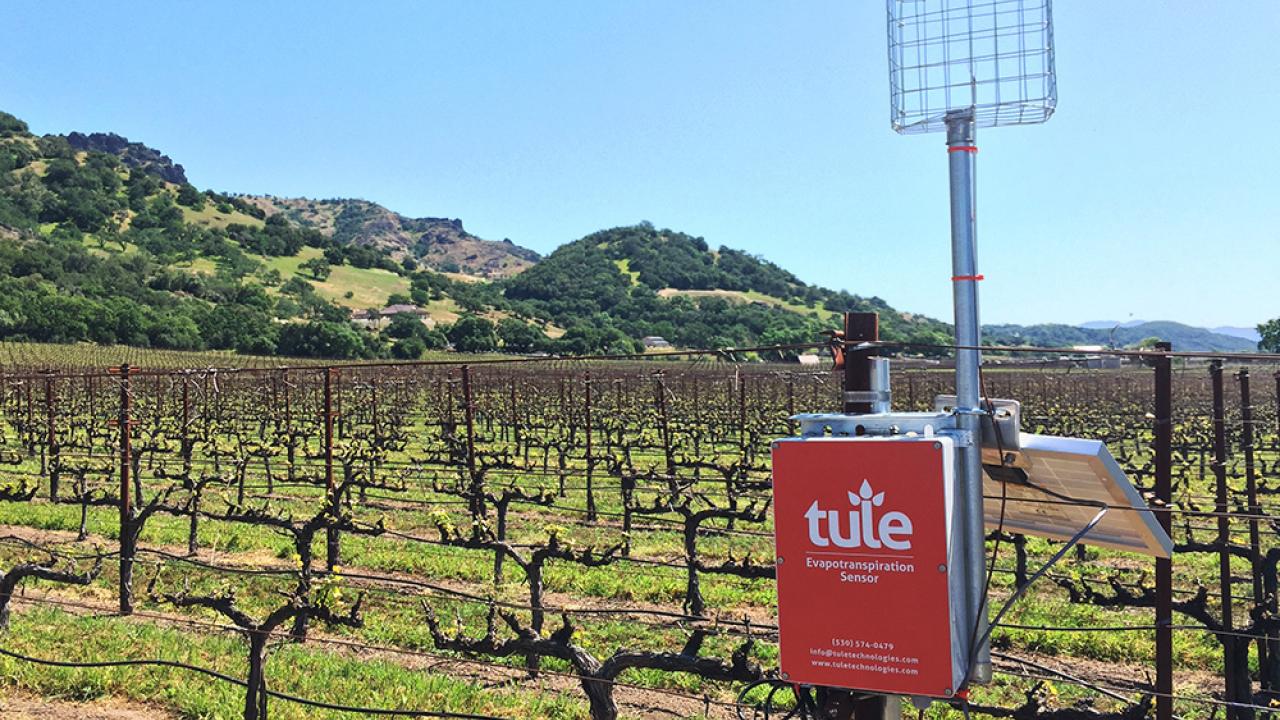
Tule Sensors Measure Up
Alumnus improves irrigation management with novel technology.
As a UC Davis student, Tom Shapland learned about and then refined a technology that could revolutionize irrigation management.
Shapland made the most of his time at UC Davis: B.S., ’07, viticulture and enology; B.A., ’07 classical civilization; M.S., ’11, horticulture and agronomy; Ph.D., ’12, horticulture and agronomy.
His love of plants led him to study viticulture and a quick realization of the significance of water in California agriculture. “The most important thing for a farmer’s livelihood is his or her decision around when to irrigate and how much to irrigate,” he said.
Farmers typically use soil or plant sensors to gauge water use, but they haven’t had a way to measure it over a broad area — until now.
Evapotranspiration (ET) is a measure of the amount of water used in a crop field. “Surface renewal” is a novel method to measure ET by monitoring wind currents. It was invented by UC Davis atmospheric science professor Kyaw Tha Paw U. In his graduate studies, Shapland figured out a way to eliminate the need for calibration of the surface renewal monitoring equipment.
“This was a huge advance for agricultural science because the method dramatically reduces the cost to measure ET,” said Richard Snyder, a Cooperative Extension biometeorologist and one of Shapland’s faculty advisers.
In 2013, Shapland licensed the technology from UC Davis and started a new business named “Tule” with cofounder Jeff LaBarge. The San Francisco-based company now installs and maintains Tule sensors in vineyards, orchards, and strawberry and tomato fields throughout California.
Data is transmitted from field sensors that cover up to 10 acres through a cellular network to Tule’s computer servers. For a flat fee, growers and managers can log on to a website and get information on water use, predicted atmospheric demand, and a plant response index. Email alerts are sent out weekly, and a mobile app is in development.
Farmers use soil or plant sensors to gauge water use, but until now, they haven’t had a way to measure it over a broad area.
“Growers are just paying for the data,” Shapland said. “They don’t want one more piece of hardware they have to worry about, how to make it run, or what to do if it breaks.”
“We’ve been able to confirm irrigation decisions in real time and push the envelope of quality without sacrificing the long-term health of the vines,” said Matt Crafton, winemaker for Chateau Montelena Winery in Calistoga, Calif.
Shapland has high praise for his UC Davis mentors: Snyder, Paw U, and plant physiologist Andrew McElrone. “I can’t overstate what a world-class education I received at UC Davis,” he said. “The campus is about bringing forth new knowledge and coming up with original ideas. I love that environment.”
#Outlook2015
- Related content
- Outlook Magazine Articles